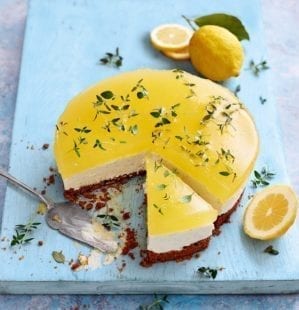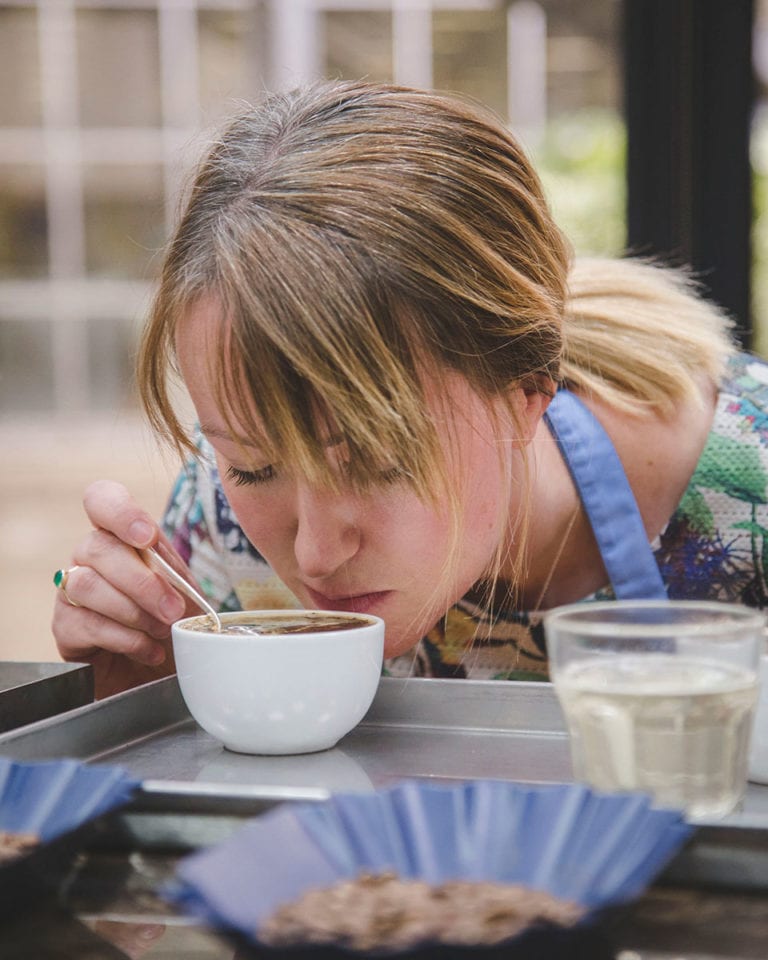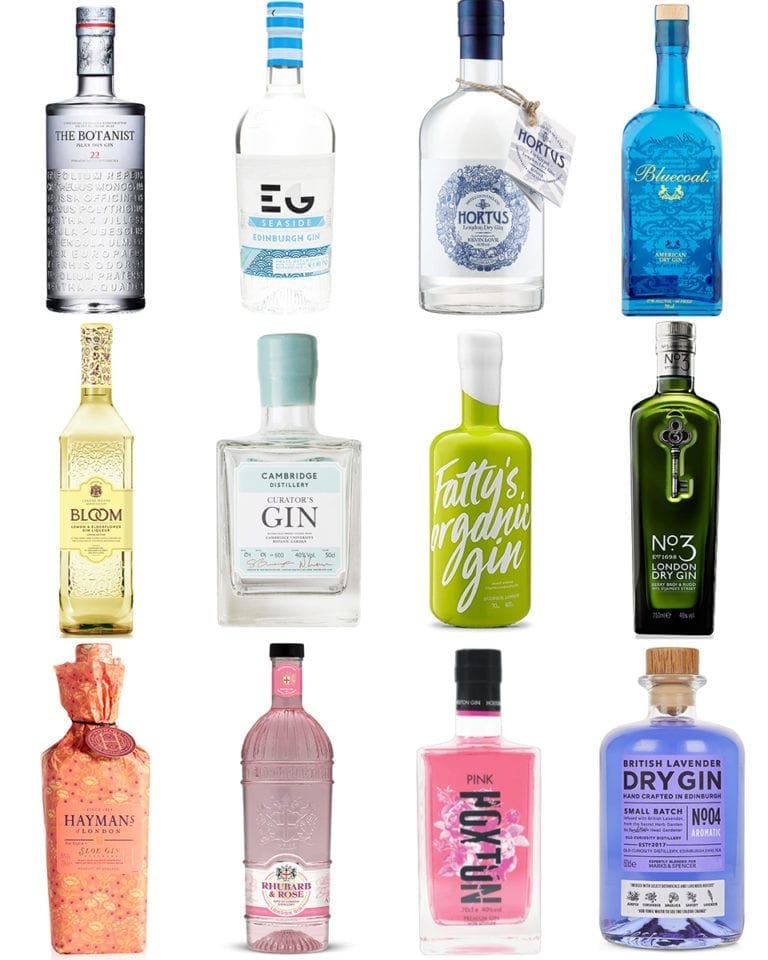Food job diaries: A day in the life of a sugar kelp diver
There’s no such thing as the dream job, but surely if you’re a fan of G&Ts, working in the gin industry seems like a pretty cushty gig.
We caught up with Lewis Mackenzie, the man who bravely plunges himself into the cold waters of the North Atlantic Ocean every day in search of sea kelp, which is one of the core botanicals used in multi-award-winning Isle of Harris Gin.
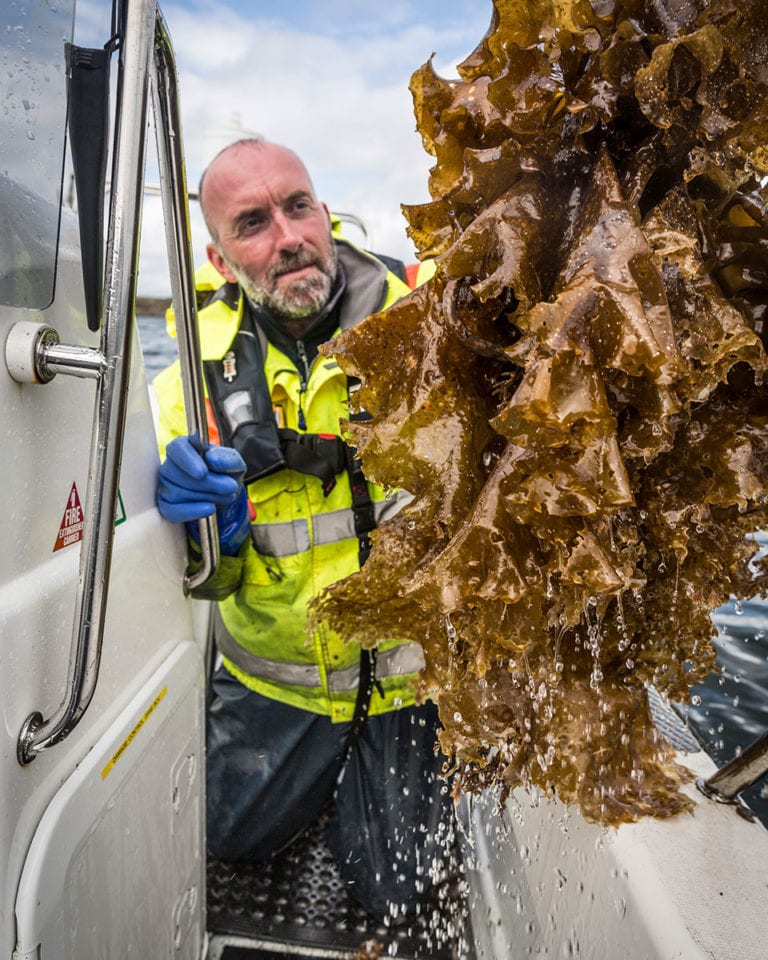
So, what does your job as a sugar kelp diver involve?
I spend my days diving into the cold North Atlantic Ocean between January and May to carefully harvest fronds of sugar kelp from carefully managed harvest areas.
How did you land a job like this?!
I was already harvesting seaweed for other customers when I was asked to supply sugar kelp for Isle of Harris Gin. I run a foraged foods business specialising in the supply of edible seaweeds to restaurants throughout the UK, so it was great to be able to gain a local customer, too.
What does an average day look like for a sugar kelp diver?
I dive usually at low tide so harvesting can be done either free-diving or using a snorkel. A 5mm thick drysuit keeps me kind-of warm. The boat is anchored over the harvest site where I’ll roll into the sea with mesh bags to collect the harvested fronds of kelp. After a couple of hours in the water (temperatures are around 7 degrees celsius) I’m ready to get back into the boat for a cup of coffee. Once back on the shore, the bags of kelp are emptied and each frond carefully cleaned and bagged, ready to be transported to the drying factory. It’s a full day’s work, although the diving itself might only take an hour or two.
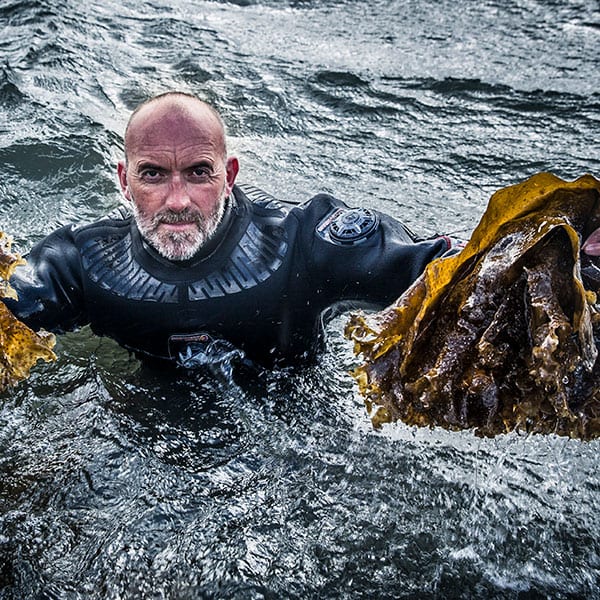
What’s the best and worst thing about your job as a sugar kelp diver?
I’ve been diving for 30 years and every day is still an adventure. Yes, it’s cold, wet and uncomfortable, but you learn to blank these out. The sights to be seen underwater around the Hebrides more than compensate for a drop or two of cold water down my neck.
Are there any restrictions on diving? Can you only dive at certain times of the year?
The sugar kelp fronds harvested for Isle of Harris Gin are full food-grade quality, and that can only be achieved in the spring when the plants are having a growth spurt and their new, blemish-free fronds are in harvestable quantity.
How do you ensure that you take a sustainable approach to sourcing the sugar kelp?
The Outer Hebrides has large beds of sugar kelp and the amount harvested to make Harris Gin is a minute fraction of the annual biomass. No sugar kelp plants are killed – only the outer-end of the frond is taken, keeping the stalk intact to re-grow to full length within 8 weeks. It’s a fully sustainable way of foraging for the kelp. The whole process is mapped using GPS, has a robust HaCCP procedure behind it and of course is open to scrutiny by Scottish Natural Heritage, who’s Code of Conduct for foraged seaweed I follow carefully.
Why do you think the addition of sugar kelp as a botanical makes Isle of Harris gin so unique?
It gives the gin a taste of the Hebridean seas; a salty, sweet note that will take you mentally to the seashore no matter where in the world you are.
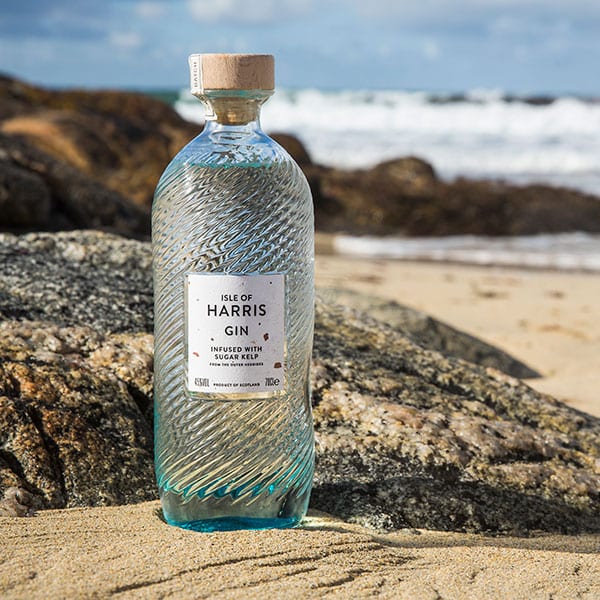
Click here to discover more about the wonderful world of Isle of Harris gin.
Subscribe to our magazine
Food stories, skills and tested recipes, straight to your door... Enjoy 5 issues for just £5 with our special introductory offer.
Subscribe
Unleash your inner chef
Looking for inspiration? Receive the latest recipes with our newsletter
